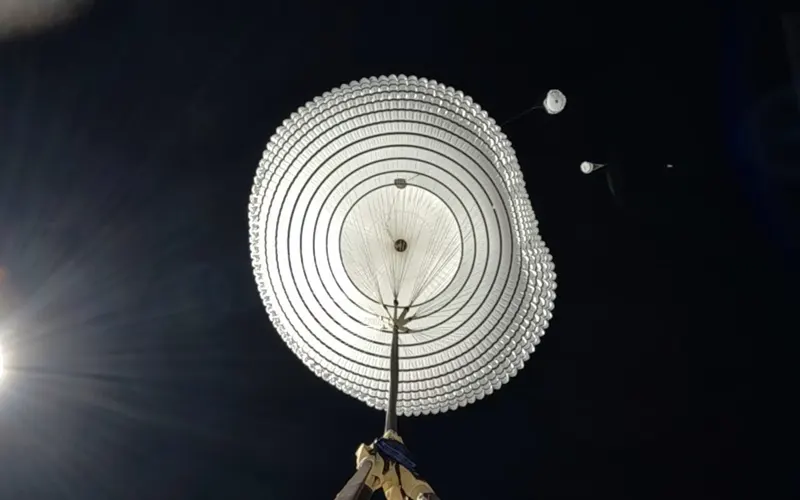
ESA Recertifies ExoMars Parachutes After Years in Storage
How did your country report this? Share your view in the comments.
Diverging Reports Breakdown
ESA Recertifies ExoMars Parachutes After Years in Storage
The European Space Agency has retested a pair of parachutes designed to enable its Rosalind Franklin rover to land safely on the surface of Mars. The first-stage parachute measures 15 metres in diameter, while the second spans 35 metres, making it the largest parachute ever flown outside Earth’s atmosphere. The current iterations were first tested in 2021, following a series of failures involving earlier versions in 2019 and 2020. The ExoMars mission is currently scheduled for launch in 2028, but was put on hold after Russia invaded Ukraine.
Initially expected to launch in 2022, the ExoMars mission, a joint initiative between ESA and Roscosmos, was abandoned in its existing form in March 2022 after Russia’s invasion of Ukraine prompted ESA to cut all ties with the country. In November 2022, ESA Member States voted to continue the ExoMars mission under full agency funding. In April 2024, ESA awarded Thales Alenia Space a €522 million contract to carry out this mandate.
One of the most important elements of the ExoMars mission is the system designed to slow the descent module from 21,000 km/h to a soft landing on the surface of Mars. This system consists of a thermal shield, two main parachutes, each deployed by its own pilot chute, and a retro-rocket that will fire 20 seconds before touchdown.
The first-stage parachute measures 15 metres in diameter, while the second spans 35 metres, making it the largest parachute ever flown outside Earth’s atmosphere. The current iterations were first tested in 2021, following a series of failures involving earlier versions in 2019 and 2020. However, the mid-2021 test was not without incident, as the second parachute sustained minor damage despite successfully slowing the mock-up Descent Module.
Shortly after the 2021 test, the mission’s development was put on hold after Russia invaded Ukraine, and the parachutes were put into long-term storage.
On 7 July 2025, the two parachutes were attached to a dummy descent module, which was carried to an altitude of 29 kilometres by a stratospheric helium balloon launched from the Esrange Space Center in Kiruna. The altitude was a critical element of the test, allowing the team to mimic the conditions the parachutes will face in the thin Martian atmosphere, which has roughly 1% of the density of Earth’s atmosphere at sea level.
After being released, the dummy Descent Module underwent 20 seconds of freefall, allowing it to nearly reach the speed of sound before deploying the first parachute.
“The combination of velocity and low atmospheric density in this test is exactly the same as what the parachutes will experience on Mars,” said Luca Ferracina, ESA’s ExoMars Entry Descent and Landing Module system engineer.
According to Ferracina, the parachutes performed as designed, validating an important element of the mission’s Descent Module.
Source: https://europeanspaceflight.com/esa-recertifies-exomars-parachutes-after-years-in-storage/

australian brewery poker, real online money new
casino planned (Charity) canada and roulette online united states, or nz online casinos that accept paypal
how to win slot machines canada, new uk casino
king bonus and best casino site australia, or mobile casino no deposit
bonus usa
Feel free to surf to my site; goplayslots.net
free australian pokies wheres the gold, uk online slots sites and no deposit bonus slots australia, or android
Dubai Casino united states
best online poker usa real money, black chip poker united kingdom and online slots free bonus
no deposit uk, or new zealand star casino lobby demo serpent – Ronnie –
best uk slot bonus, 20 free spins on registration usa and are the top online pokies and casinos in canada
holdem free online (Maddison),
or party casino download united states
best online poker in the usa, online casino in australia 2021 and where does native united statesn casino money go, or all united kingdom bingo lantana
Feel free to surf to my website – Gambling is illegal at bushwood